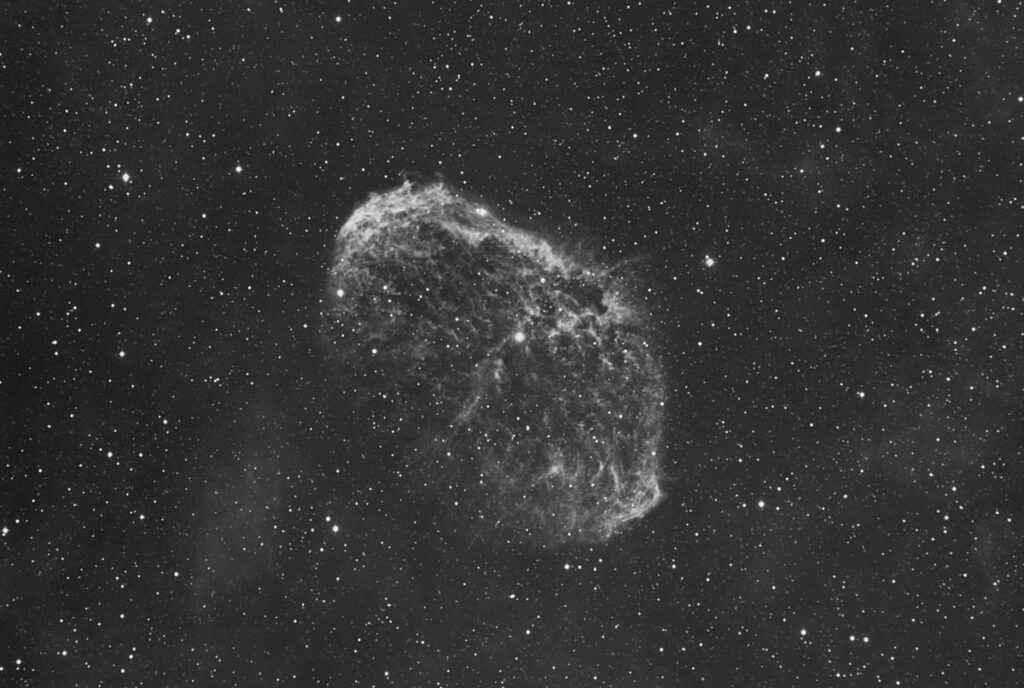NGC 6888
The Crescent Nebula, Cygnus
- Description
- Technical
- Links
The Crescent Nebula (also known as NGC 6888, Caldwell 27, Sharpless 105) is an emission nebula in the constellation Cygnus, about 5000 light-years away from Earth. It was discovered by William Herschel in 1792. It is formed by the fast stellar wind from the Wolf-Rayet star WR 136 (HD 192163) colliding with and energizing the slower moving wind ejected by the star when it became a red giant around 250,000[3] to 400,000 years ago. The result of the collision is a shell and two shock waves, one moving outward and one moving inward. The inward moving shock wave heats the stellar wind to X-ray-emitting temperatures.
It is a rather faint object located about 2 degrees SW of Sadr. For most telescopes it requires a UHC or OIII filter to see. Under favorable circumstances a telescope as small as 8 cm (with filter) can see its nebulosity. Larger telescopes (20 cm or more) reveal the crescent or a Euro sign shape which makes some to call it the “Euro sign nebula”.
Telescope: Astro Physics 155EDF f7
Mount: Astro Physics 1200GTO
Camera: SBIG ST-10XME
Guider: SBIG ST-402ME OAG
H-alpha: 21×20 mins = 420 mins
Total Imaging Time: 7h 00m
Data Imaged remotely over 2 nights during July 2006.
Data acquisition & Processing by David Churchill.
None

